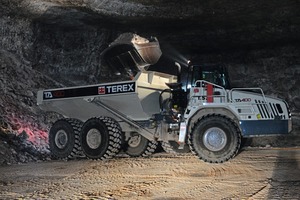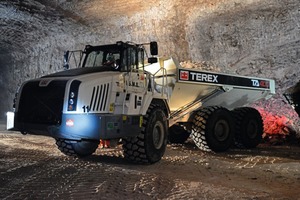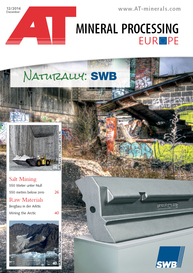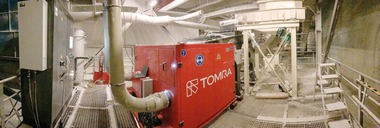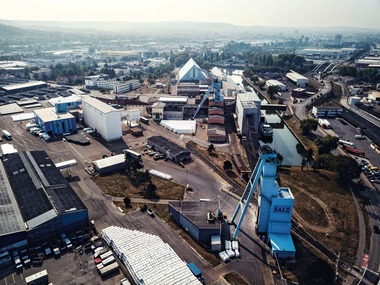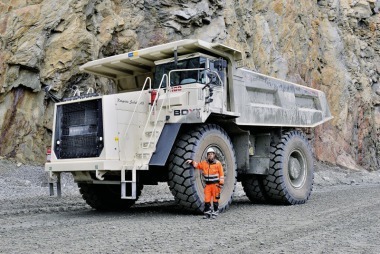Salt for clear roads – whatever the weather
Irish Salt Mining and Exploration’s Carrickfergus mine plays a vital part in keeping the UK’s road network open during winter, with Terex Trucks surefooted articulated dump trucks hauling extracted salt. In 2015, total world production of salt reached 273 million t according to market research company Statista.
Situated to the north of Belfast, Northern Ireland, Irish Salt Mining and Exploration’s (ISME) Carrickfergus mine was developed specifically to mine de-icing rock salt for winter road maintenance. Founded in 1965, ISME is positioned in a prime location, thanks to its proximity to the coast, as well as the construction of a ship loading terminal, which enables the company to develop a successful export market. The company’s 55-strong workforce currently produces between 300 000 to 500 000 t of road salt per year, and provides local authorities across the UK with rock salt to help keep the road network open during the icy winter months.
Mining at Carrickfergus uses the ‘room and pillar’ dry mining method. There are five seams of salt, but ISME only mines one extensively, due to the thickness of the seams. This is because 3.5 m of salt must be left above the excavated rooms as a support. At its deepest point, the mine reaches 305 m below ground. “The deeper you get, the larger the pillars,” explains Mine Manager Derek Moore. “But on average the room sizes are 15.3 m wide and 9 m high. In the older part of the mine, they are just 6.7 m high, while the pillars are 39.6 m² in the newest part of the mine, and 27.4 m² in the older parts.”
The geology of the area is fairly simple too. There are no gases or moisture to contend with, which makes mining a simpler process too. Moore explains: “We drill; we cut; we blast; we muck out.” During mining, the salt bed is undercut then drilled and blasted. Blasting happens at the end of each 10-hour shift, usually around 17.30, and sees three faces advance 3 m each time. The next morning’s first job is roof scaling, using a rotary cutting head designed specifically for the purpose. The broken salt is then loaded into one of ISME’s seven Terex Trucks haulers (Fig. 1), including two new TA400s, and hauled to the crushing plant (Fig. 2). Crushing and screening are completed underground before the finished product is transported, via a 2 km-long network of conveyors, to the surface. The salt, ready for use, is then treated with an anti-caking additive and stored undercover for dispatch by sea from the company’s own quay, or by road.
ISME’s newest machine, a 38-tonne capacity TA400 with a six cylinder Scania DC13 Tier 4 Final engine, arrived on site in February 2016. Moore says the company looked at other options before purchasing its newest hauler, but it was the ‘simple’ nature of Terex Trucks’ haulers that won the day. “It’s easy to maintain and service, so we are confident that it’s going to keep working. We find that once you have too many computers involved in running your machines then problems can start occurring. We wanted something that’s robust and comfortable for the drivers. At the same time, fuel efficiency and environmental concerns played a part in choosing the right truck. And, of course, the back-up we get from the dealer also impacted our final decision“, says Moore.
There have been no problems running any of the machines. ISME keeps the trucks clean as an added safety precaution to reduce the risk of fire, while adhering to the maintenance and servicing schedule, as well as doing daily and monthly checks. The company operates its own workshop to carry out routine maintenance and servicing. Keeping to the mine’s speed limit is a key factor in reducing wear and tear, as well as minimizing fuel consumption. But the working conditions are still extreme, with the trucks having to cope with corrosive salt and dust, not to mention the temperatures inside the mine. “With all machines, it’s common that as they age there can be problems with the chassis because they really do take a pounding, but our oldest haulers are still operating after 25 years“, Moore adds.
www.terextrucks.com

